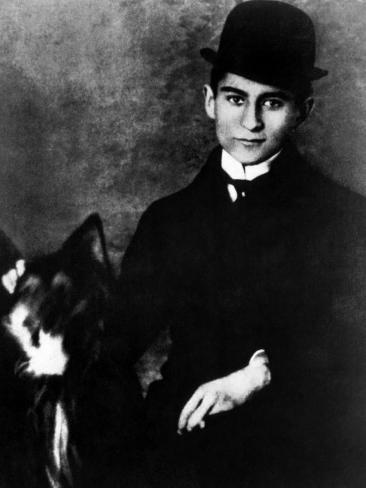
Much of the remaining 10 per cent is lost or otherwise unpublished. He burned an estimated 90 per cent of his total work due to his persistent struggles with self-doubt.
#Franz kafka biography free#
Kafka was a prolific writer, spending most of his free time writing, often late in the night. He died in obscurity in 1924 at the age of 40 from tuberculosis. He became engaged to several women but never married. Over the course of his life, Kafka wrote hundreds of letters to family and close friends, including his father, with whom he had a strained and formal relationship. He trained as a lawyer, and after completing his legal education was employed full-time by an insurance company, forcing him to relegate writing to his spare time. Kafka was born into a middle-class German-speaking Czech Jewish family in Prague, the capital of the Kingdom of Bohemia, then part of the Austro-Hungarian Empire (today the capital of the Czech Republic). The term Kafkaesque has entered English to describe absurd situations like those depicted in his writing.
#Franz kafka biography trial#
His best known works include the novella The Metamorphosis and novels The Trial and The Castle. It has been interpreted as exploring themes of alienation, existential anxiety, guilt, and absurdity. It typically features isolated protagonists facing bizarre or surrealistic predicaments and incomprehensible socio- bureaucratic powers. His work fuses elements of realism and the fantastic. It was created by Czech sculptor David Černý in 2004.Franz Kafka (3 July 1883 – 3 June 1924) was a German-speaking Bohemian novelist and short-story writer based in Prague, who is widely regarded as one of the major figures of 20th-century literature. Outside the museum is an exhibit called Piss, a bronze fountain of two men urinating into a lake shaped like the Czech Republic. The space is dark and has special elements such as a long, red-lit staircase and mysterious sound effects. The museum features strange and absurd design elements that are inspired by Franz Kafka's unusual ideas. There are two permanent exhibitions: one explores Prague's influence on Kafka's work, and the other focuses on how Kafka describes Prague in his writing. The impression therefore is that the museum is made mainly for foreign tourists rather than people from the Czech Republic. All texts are in English, some - mainly quotations - also in Czech and German.


Some of the explanatory texts are hardly readable, because they are located on transparent surfaces with exhibits in the same color as the letters. It includes correspondence between Kafka and writer Milena Jesenská. The exhibition features copies of manuscripts as well as photographs and personal documents, but no originals. The Franz Kafka exhibition moved to New York City's Jewish Museum in 2002 before its permanent installment, which opened in the summer of 2005 in the Herget Brickworks building in the Malá Strana district of Prague. The Kafka exhibit was called "The City of K.: Franz Kafka in Prague" and the two other exhibits explored James Joyce and Dublin and Fernando Pessoa and Lisbon. The exhibit was first displayed in Barcelona in 1999 in a three-part exhibition exploring famous authors' relationships to their cities. The museum hosts a number of first edition Kafka books. The Franz Kafka Museum in Prague is dedicated to the author Franz Kafka.


 0 kommentar(er)
0 kommentar(er)
